Standing on the shoulders of ordinary-sized people

It's easy to look at universally loved games and observe how they helped shape their respective series, genres, or video games as a whole. I could note how Halo's recharging shields divided first-person shooter design into Before Combat Evolved and After Combat Evolved. I could pick out the Gravity Gun from Half-Life 2 and trace its physics goofballery to games of all stripes. I could wax philosophical on the paradigm-shifting 3D worlds of Super Mario 64. But that's too easy.
It's much more interesting to look at the games standing in their shadows, the ones that attracted cult followings at best or complete dismissal at worst. The black sheep. But just because they aren't pillars of the medium doesn't mean they didn't add plenty to the discussion. Here are just a few examples of some very influential games that nonetheless failed to set the world on fire.
Super Mario Bros. 2 adds character select and Shy Guys
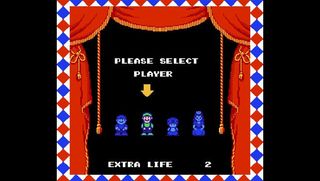
The second Super Mario Bros. is a weird one, and why it stands apart from the rest of the genre-defining Mario series to this day is a tale well told: the game that released as Super Mario Bros. 2 outside of Japan is actually a rejigged version of NES platformer Yume Koujou: Doki Doki Panic (the Japanese Super Mario Bros. 2 later saw release overseas as "The Lost Levels" in Super Mario All-Stars). Purists may be inclined to dismiss the dreamy title based on its provenance, but fortunately, Nintendo didn't feel the same.
Its most prominent contribution to the Mario series is the four-player character select system that would reappear decades later in the New Super Mario Bros. series and in Super Mario 3D World--the latter game's roster of characters and associated platforming quirks directly mirrored Super Mario Bros. 2 (alongside one not-so-secret addition). Not to mention we wouldn't have Shy Guys to jump on or Birdo to play tennis with if not for SMB2.
Assassin's Creed 3 introduces naval battles

Assassin's Creed 3 had a lot going against it: it was the fourth entry in as many years in a series some weren't quite ready to see annualized. It was saddled with concluding Desmond Miles' convoluted modern day narrative even as it brought the series to the New World and introduced an all-new cast of semi-historical characters. And speaking of new characters, it suffered under the whiny weight of its unlikable protagonist--admittedly, the smooth, playful, and well-adjusted Ezio Auditore was a tough act to follow.
But Ratonhnhak:ton did get first dibs on one element that would remain long after his comparatively brief role in the series: naval combat. The ship-to-ship combat of the Revolutionary War plays a relatively minor part in Assassin's Creed 3, but what's there was nigh-universally praised. Ubisoft would go on to create two games that traded much of the city-slicking parkour for high-seas battle: the much-loved Assassin's Creed 4: Black Flag, and the upcoming Assassin's Creed Rogue.
Zelda 2: The Adventure of Link adds villages and villagers
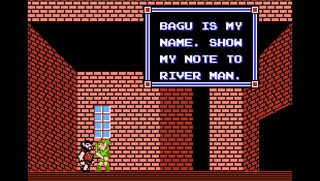
Zelda games are known for a few constants: the titular princess is probably in need of rescuing, Link must clear out a bunch of dungeons and loot their nifty items to liberate her, and he's free to explore a huge world, visit villages, and take on side quests instead of actually averting the apocalypse. You'll find a heaped helping of the first two factors in the 1986 original, but not so much of the third.
Hyrule didn't grow from a monster-ridden hellscape into a vibrant kingdom until Zelda 2: The Adventure of Link. The sequel let the green-clad hero roam around a big old world map and visit a handful of villages with familiar names like Ruto, Saria, and Darunia. The residents of said villages loved to chat, maybe in hopes of improving their tenuous grasp on the English language. Thus began the fine Zelda tradition of running around a town and introducing yourself to everybody in the hopes of discovering easy rupees and hints for the journey ahead. Oh yeah, and Zelda 2 is also where Dark Link started messing up everybody's business. So thanks for that.
Halo 3: ODST opens the way for Spartan Ops
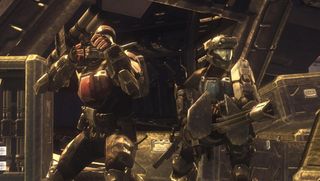
Halo 3: ODST is best remembered as "that one Halo game Bungie released after Halo 3 that wasn't Reach". And, yeah, fine, it would have been an expansion pack if it released five years earlier and a Season Pass campaign if it released five years later. But the comparatively mundane tale of a lone Orbital Drop Shock Trooper trying to figure out what went wrong in a Covenant-occupied New Mombasa remains an under-appreciated gem.
Aside from adding extra multiplayer maps to the Halo 3 rotation, ODST also introduced Firefight mode: a four-player co-op horde defense mode that would go on to inspire Halo 4's Spartan Ops campaign. The single-player campaign was the first of its kind in the Halo series to star a regular grunt (not that kind of Grunt). Players had to approach combat encounters cautiously--sometimes avoiding them entirely--as they puzzled out the noir-inspired narrative, finding clues to the fates of their missing squadmates and reliving their part in the battle for the city. For the fifth game in the heavyweight series (counting Halo Wars), ODST was positively avant garde.
The Final Fantasy Legend introduces handheld RPGs (and deep nihilism)
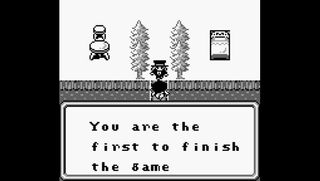
Another example of two disparate series being combined for the benefit (read: marketing convenience) of Western audiences, The Final Fantasy Legend was a weird little Game Boy game. It released in Japan as the first episode of the SaGa role-playing series, though Square continued the cross-franchise masquerade in the west for Final Fantasy Legend II and III.
Not only was The Final Fantasy Legend technically the first of many Final Fantasy spin-off series (just, uh, not in Japan), it was one of the very first portable RPGs. Handheld consoles would prove very hospitable to JRPGs in the decades ahead thanks in large part to Square's early effort here. And despite its origins as an entirely different series, Legend did foreshadow much of the nihilism and self-awareness at the core of some latter-day Final Fantasy titles--in the game's conclusion, your heroes discover that the Creator of the world baited them into their epic quest against evil just so he could enjoy watching their struggle. So they kill him.
BioShock 2 doesn't make the canon, but it does Go Home
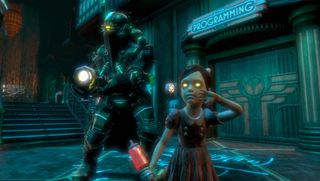
If you asked BioShock creator Ken Levine what he thought about BioShock 2, he'd probably appear to be confused for a moment and then note, very politely, that the name of the game is actually BioShock Infinite. Of course, that's just a guess based on how prominently the characters and background introduced in BioShock 2 figured into the downloadable Rapture/Columbia epilogue BioShock Infinite: Burial at Sea--which is to say, pretty much not at all.
BioShock 2 was developed at 2K Marin, a continent's width away from Levine's auteurial influences. Despite that narrative dead end, it at least went on to inspire some less official successors: work on BioShock 2's downloadable campaign, Minerva's Den, brought together the team that would later create Gone Home--an industry favorite for its heart-aching narrative, and by far the best first-person object-picker-upper of 2013.
Battlefield Vietnam sends in the choppers
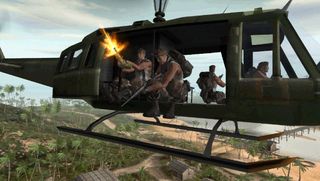
The second game in the Battlefield series--though EA and DICE didn't see fit to award it a numeral--Battlefield Vietnam never hosted the bevy of expansions that its number-laden siblings all received. I mean, heck, even Battlefield 2142 got Northern Strike. Maybe it was the controversial subject matter of America's least-popular war, or maybe it was the fact that the actual Battlefield 2 would release a year later? Who knows.
Regardless of the expansion pack snub, ever since their debut in Battlefield Vietnam (not counting the weird little prototype units in Battlefield 1942: Secret Weapons of WWII), a match in the online shooter series just isn't complete without the whud-whud-whud of distant helicopter rotors. Likewise, its unabashed cinematic inspiration (oh, you just happened to license "Ride of the Valkyries" and stick working radios in the helicopters?) resurfaces in the upcoming Battlefield Hardline. Lastly, it may have had some bearing on Battlefield: Bad Company 2's one-and-only full-blown expansion: Vietnam. Aww, at least they have each other.
The Legend of Zelda: Majora's Mask rethinks progression

Ok, so nobody is going to have an easy go following up on one of the most important games of all time. But why not up the challenge a little bit? Let's put The Legend of Zelda: Majora's Mask out just two years after Ocarina of Time, a little bit before the bitter end of Nintendo 64 as a relevant gaming console. Heck, while we're at it, let's release in North America on the same day as PlayStation 2!
Despite its hurdles, Majora's Mask was filled with fresh thinking for the Zelda series. Its repeating three-day cycle livened up the series' staid dungeon progression long before Zelda Wii U's open-world came into focus. It plunged deep into the lingering darkness with which Ocarina of Time only flirted, telling bittersweet to downright-heartbreaking stories that make Twilight Princess' dark n gritty narrative look sophomoric by comparison. Most importantly of all, without Majora's Mask, Tingle never would have floated daintily into our lives. Truly, we were all lost before his giant red balloon appeared on the horizon.
Baa, baa, black sheep
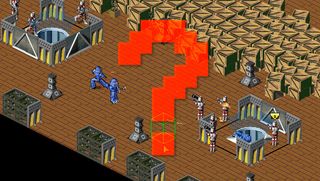
Of course, it's tough to pick out all the super-influential-but-not-so-popular games because, well, they're not so popular. Thankfully, you're here. Let us know what we missed in the comments section below!
If you'd like to check out some of these older entries for yourself, check out our retro console buying guide. If you want some creepier insights, check out the scariest video game Easter Eggs and where to find them.

